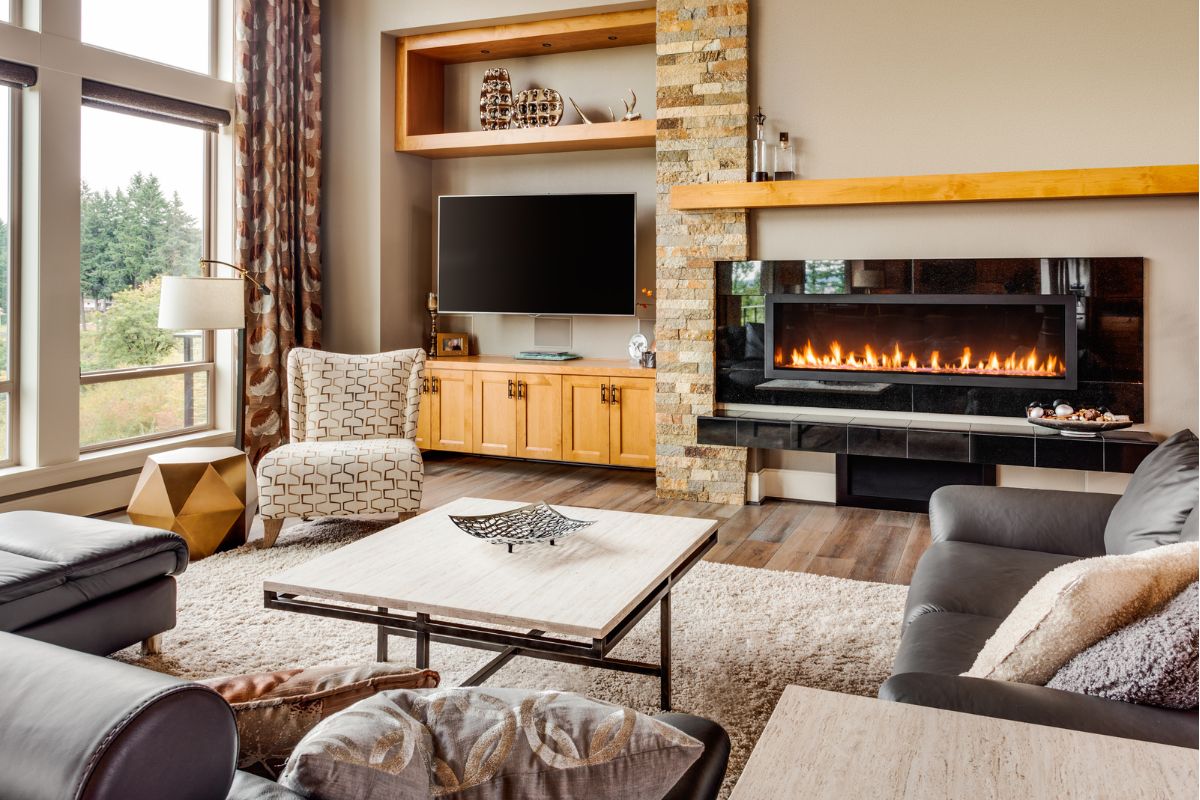Bay windows can add an elegant touch to any living room, offering expansive views and inviting natural light. However, they also present a design challenge regarding TV placement.
The TV often takes center stage in a typical living room, but a bay window complicates matters by demanding its own attention. How can you harmonize these two focal points?
Here are some tips to guide you in positioning your TV without undermining the aesthetic charm of your bay window.
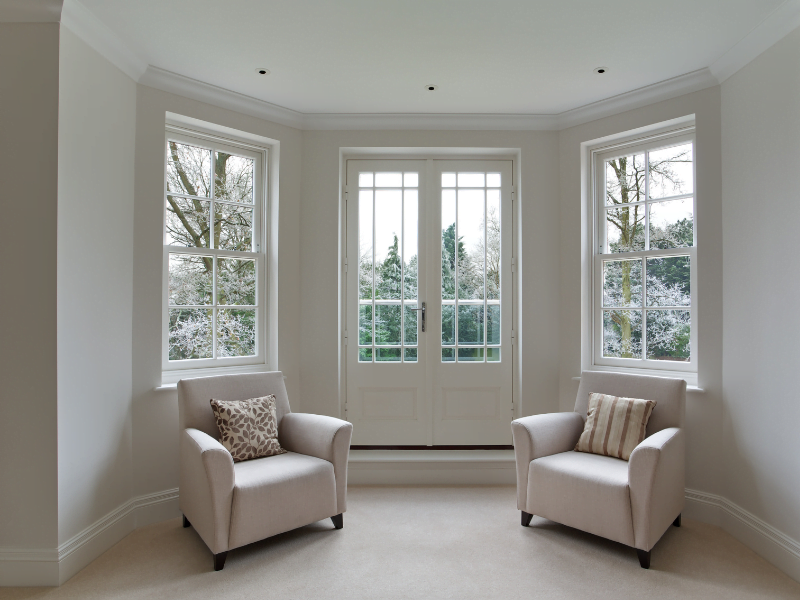
Criteria for Placement
Before we dive into the specific options for positioning your TV in a room with a bay window, it’s crucial to outline the key criteria to guide your decision-making process.
These factors are foundational to achieving a functional and visually appealing room layout:
- Functionality and Comfort: Consider seating and distance for optimal viewing comfort.
- Aesthetics and Design Flow: Aim for a layout that harmonizes with furniture, colors, and architecture.
- Lighting Conditions: Assess how natural light interacts with the TV to reduce glare and reflections.
- Flexibility: Evaluate how easily you can change the room layout based on the chosen TV placement.
- Cable Management: Plan for discreet and organized cable solutions to maintain a clean look.
- Traffic Flow: Ensure the TV’s location doesn’t obstruct movement or create cramped spaces.
By keeping these criteria in mind, you’ll be better equipped to choose a TV placement that balances both functionality and aesthetic appeal.
Top 5 Ideas for TV Placement in a Bay Window Living Room
Corner Placement
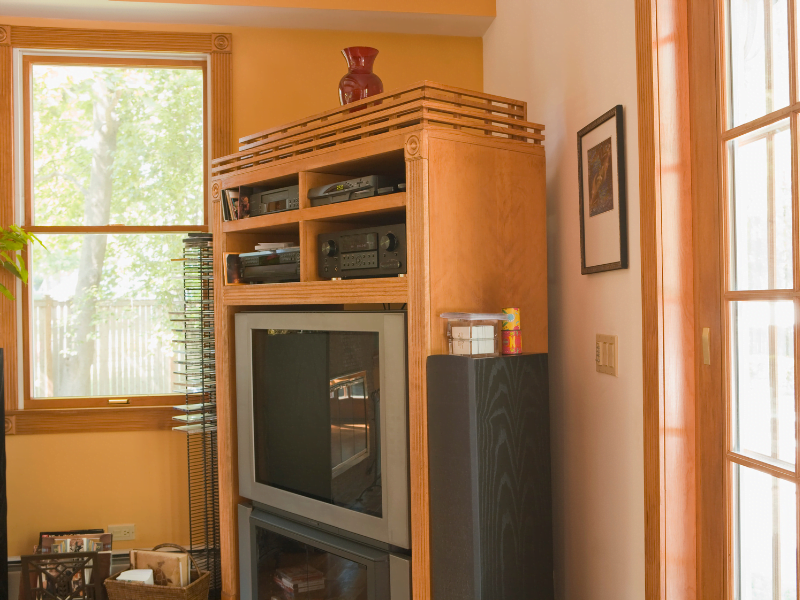
The corners of your living room can be a practical choice for situating your TV. This option allows the bay window to remain the room’s focal point.
Installing a corner TV mount or a small media cabinet can make this setup look seamless and well-planned. You’ll still enjoy the outdoor view and natural light while having a cozy spot to watch TV.
Features
- TV is placed in a corner, away from the bay window.
- It may involve a corner TV mount or a specialized corner media cabinet.
Advantages
- Maximizes floor space.
- Allows the bay window to remain the primary focal point.
- Offers a cozy and intimate setting for TV watching.
Disadvantages
- It might limit the size of the TV that can be accommodated.
- Some seating arrangements may offer poor viewing angles.
- It may require additional corner furniture, adding to the expense.
Use of Low Furniture
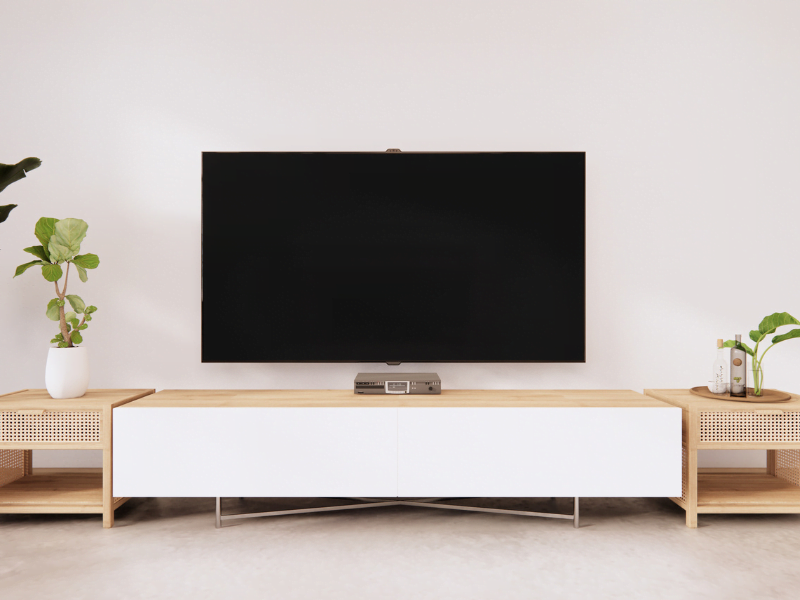
Another alternative is to place the TV in front of the bay window but on a low piece of furniture. This ensures that the television doesn’t obstruct the view.
During the day, the focus can remain on the scenery outside; in the evenings, it can shift to your favorite shows and movies. Invest in a good quality TV with anti-glare features for the best viewing experience.
Features
- TV is situated in front of the bay window on low furniture.
- Anti-glare TV features may be necessary.
Advantages
- Maintains an unobstructed view through the bay window.
- Creates a dual focus: nature by day and entertainment by night.
- Simplifies room layout since no additional partitions or dividers are needed.
Disadvantages
- Direct sunlight might affect TV visibility, even with anti-glare technology.
- It can create a cluttered appearance if not carefully executed.
- It may compromise the aesthetic appeal of the bay window.
Partition or Room Divider
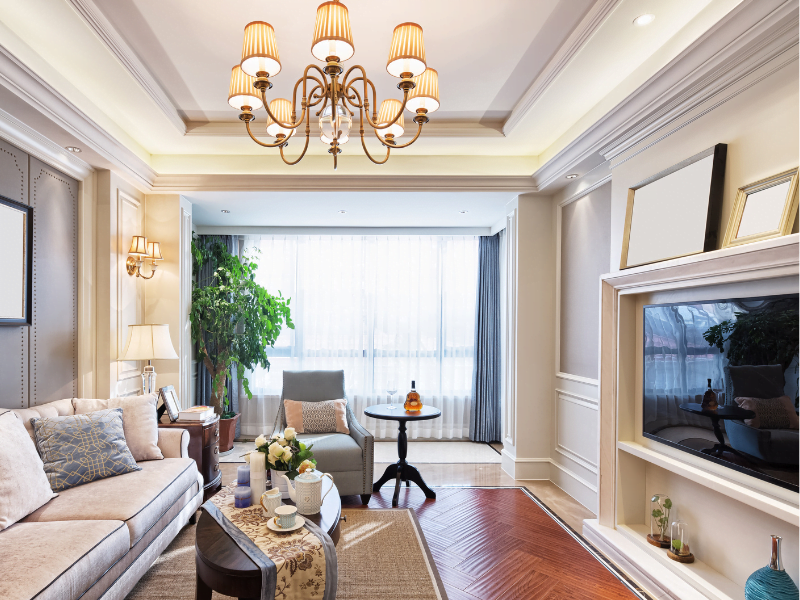
Using a partition or room divider allows you to separate the space visually, creating distinct areas for the window and TV.
For example, a high-backed sofa or a bookcase can serve as a subtle division, giving each feature its designated space. This allows for greater flexibility, letting you appreciate the window and your entertainment system.
Features
- Using physical barriers like a high-backed sofa or a bookshelf to separate the TV area from the bay window.
Advantages
- Creates clearly defined spaces for different activities.
- Adds architectural interest and complexity to the room.
- Provides additional storage or decorative space (e.g., bookshelves).
Disadvantages
- It can make the room feel smaller or more segmented.
- It may require purchasing additional furniture pieces.
- Potential for a cluttered or overly busy appearance.
Off-Center Arrangement
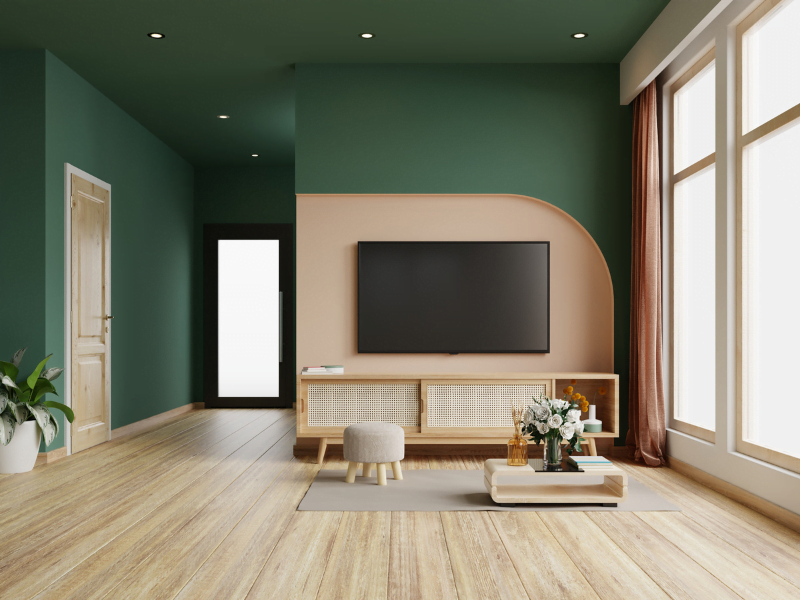
Who says everything has to be perfectly symmetrical? An off-center arrangement can add a dynamic feel to your living room.
You could place the TV adjacent to the bay window, aligning it with furniture like a couch or a coffee table. This setup allows for more freedom of movement and adds a contemporary edge to your room.
Features
- TV is placed on a wall adjacent to the bay window.
- Asymmetrical layout involving other pieces of furniture.
Advantages
- Introduces a dynamic, modern aesthetic.
- Provides flexibility in room arrangement.
- Allows more effortless movement and flow within the space.
Disadvantages
- It may require more effort to achieve a balanced look.
- It could disrupt traditional or symmetrical design themes.
- Some viewers may find off-center TV placement distracting or uncomfortable.
Wall-Mounted Solutions
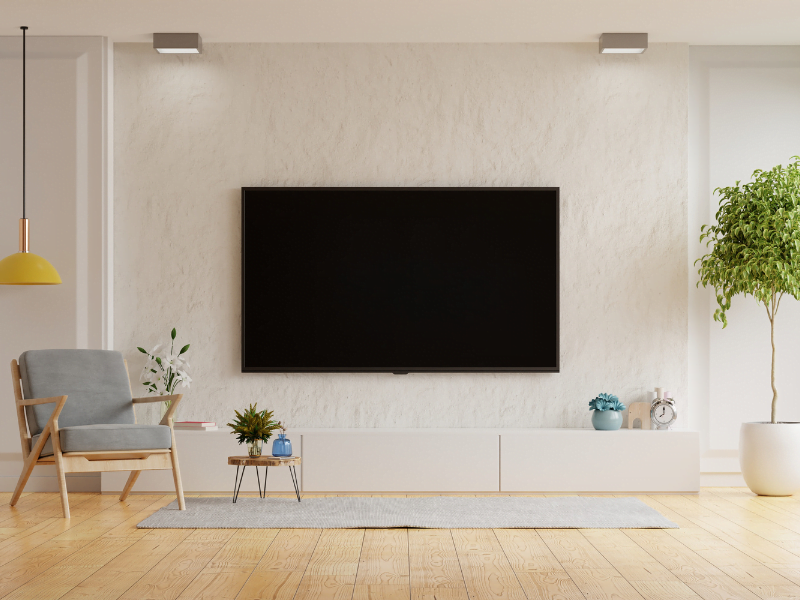
Modern, sleek, and space-saving wall mounts can offer a neat solution. If the architecture of your room allows it, you might consider mounting the TV on a wall perpendicular to the bay window.
This placement gives you the best of both worlds, allowing easy viewing while still letting you enjoy the benefits of the bay window.
Features
- TV is mounted on a wall, usually perpendicular to the bay window.
- Requires sturdy wall anchors and possibly professional installation.
Advantages
- Saves floor space, creating a cleaner look.
- Allows for greater flexibility in TV size.
- Makes it easier to manage cables and wires.
Disadvantages
- Limits your ability to change the TV’s position easily.
- It may require professional installation, adding to costs.
- Walls must support the TV’s weight, limiting placement options.
By weighing each option’s features, advantages, and disadvantages, you can make an informed decision about where to place your TV in a living room with a bay window.
This will help you harmonize functionality with aesthetic appeal, making the most of both focal points in your living space.

